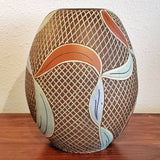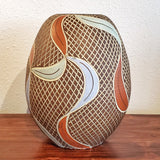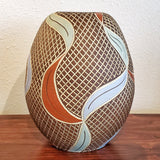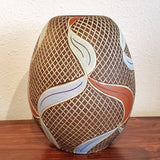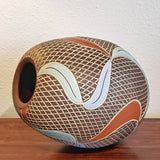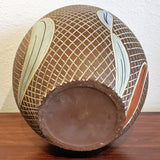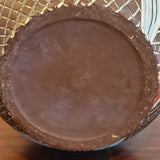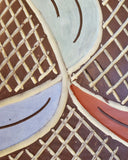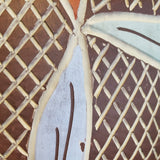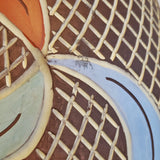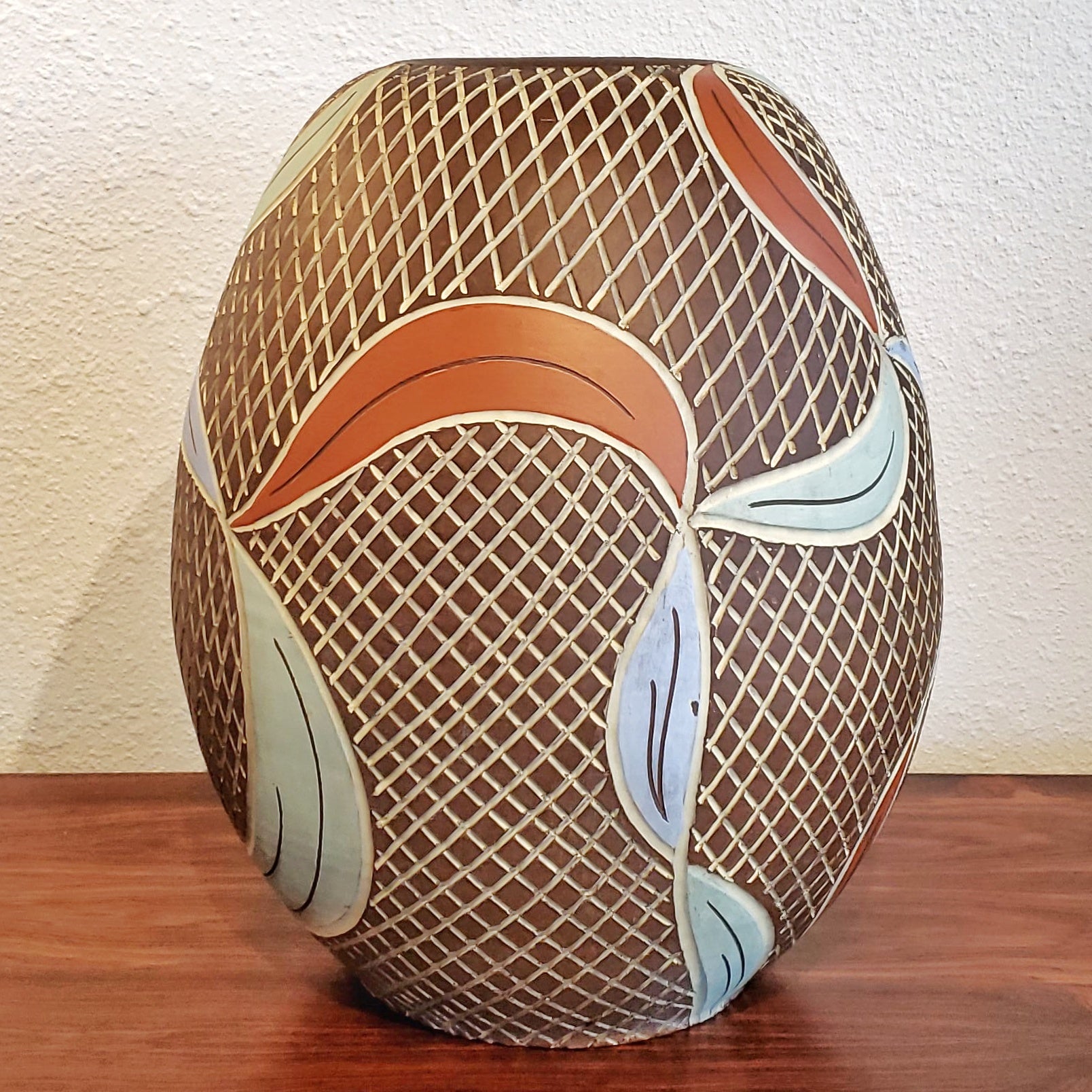
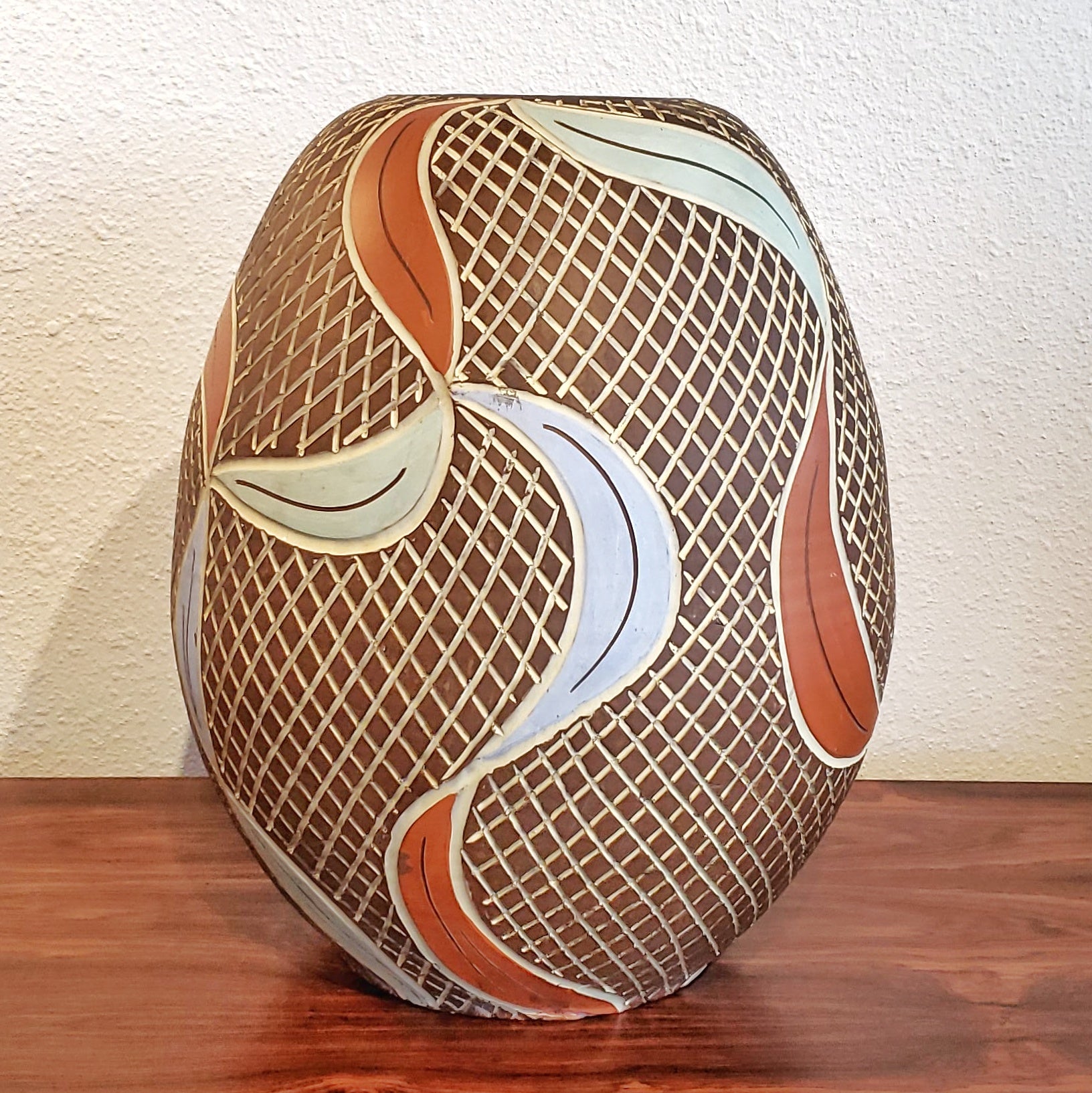
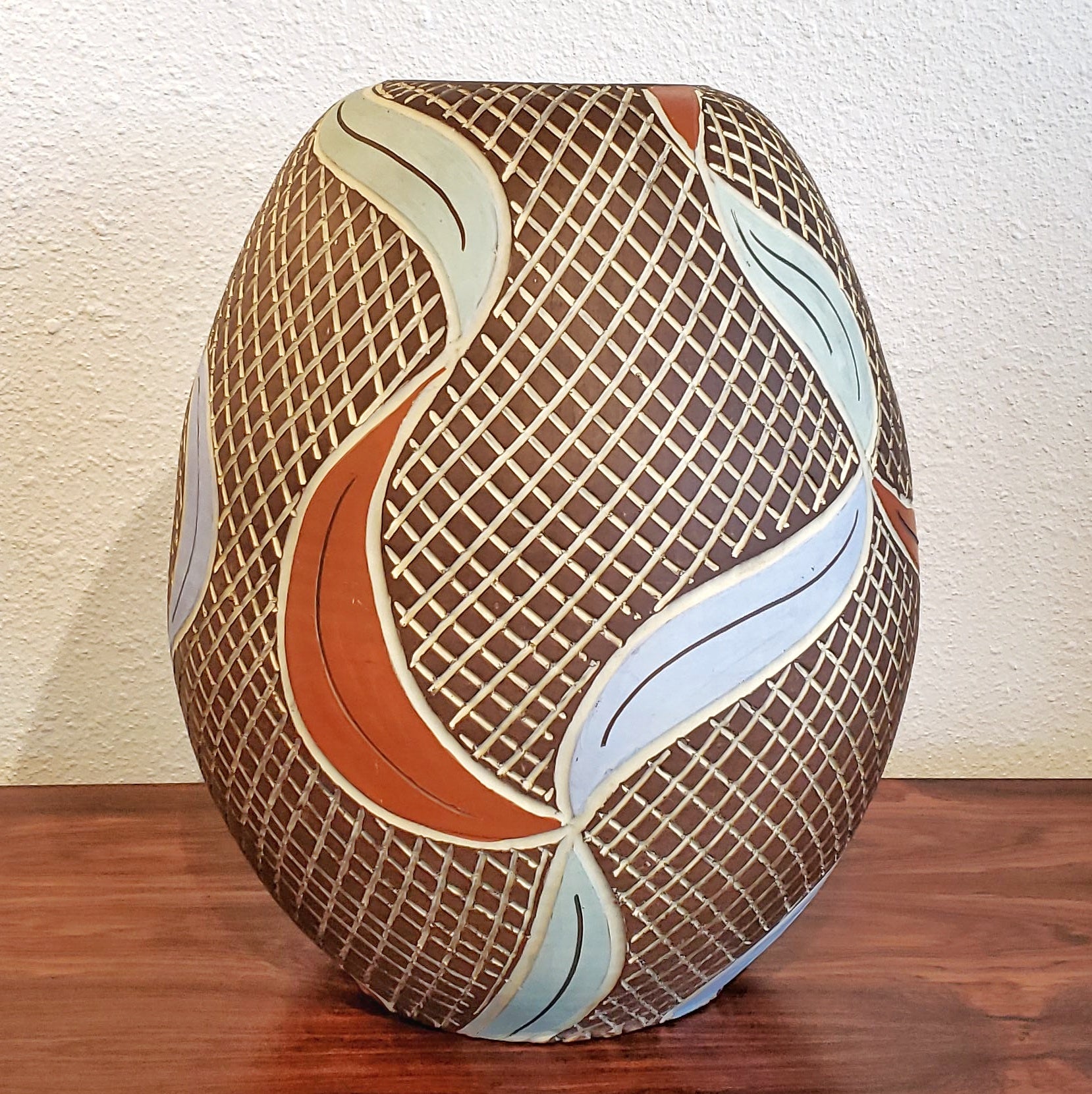
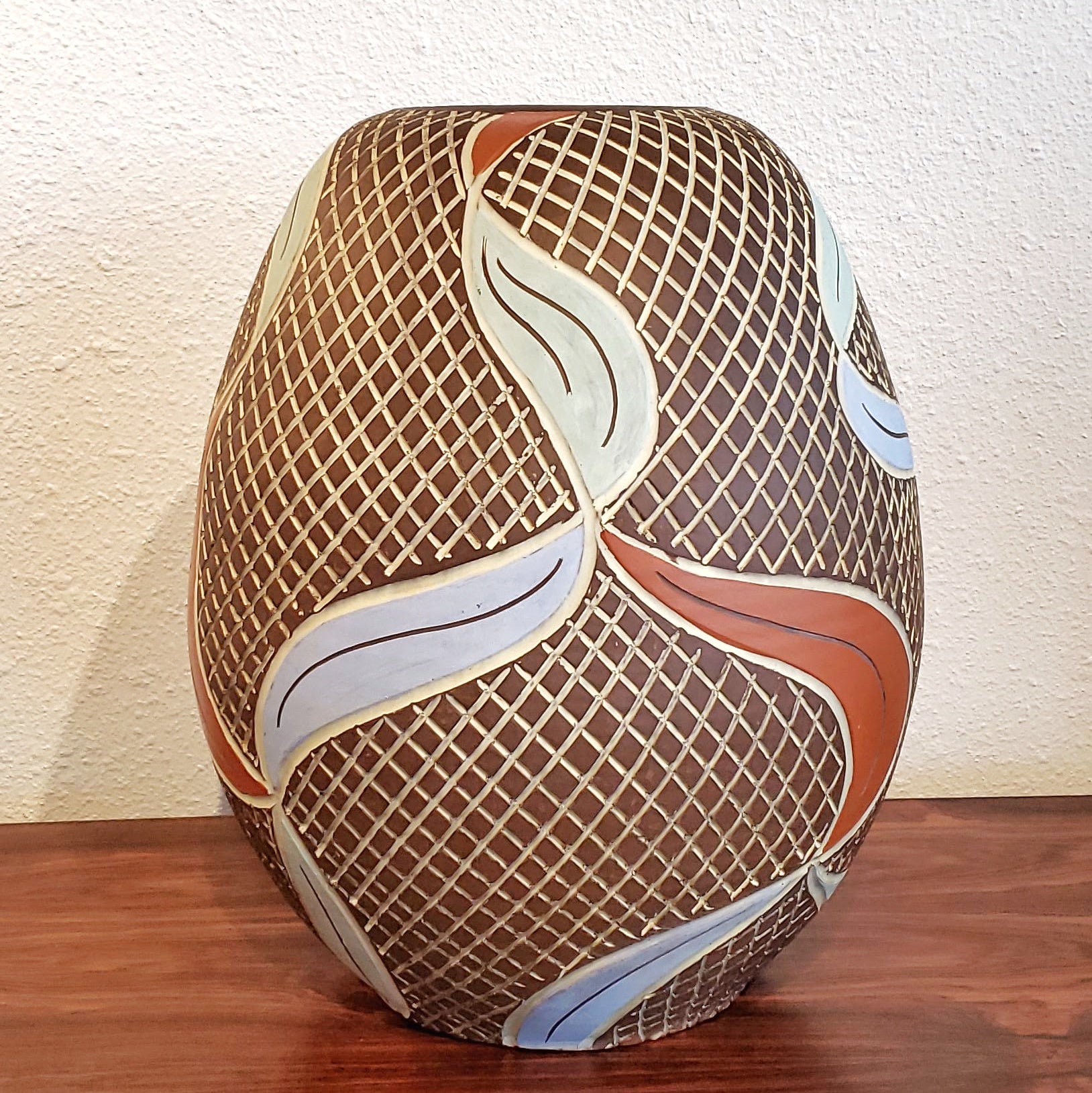
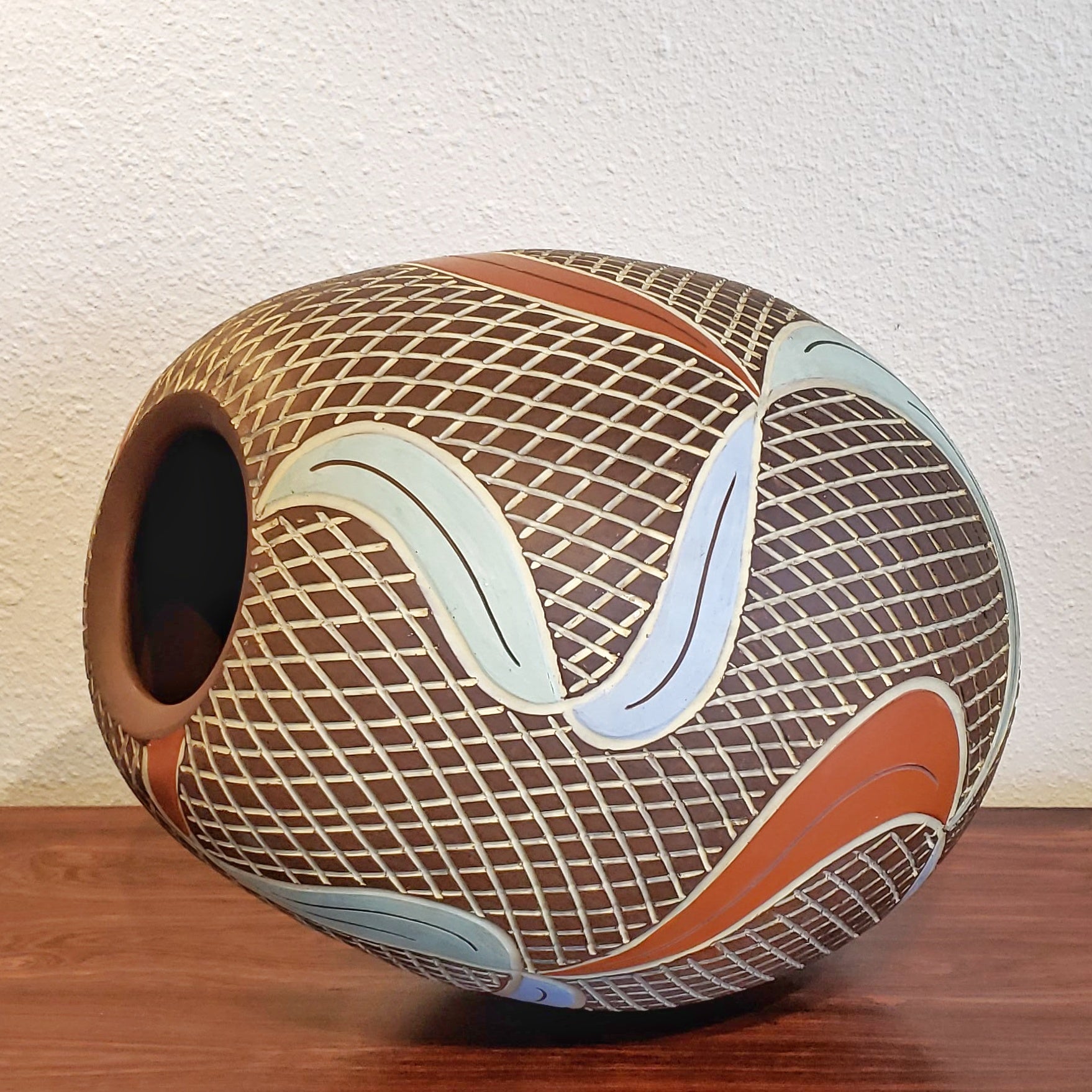
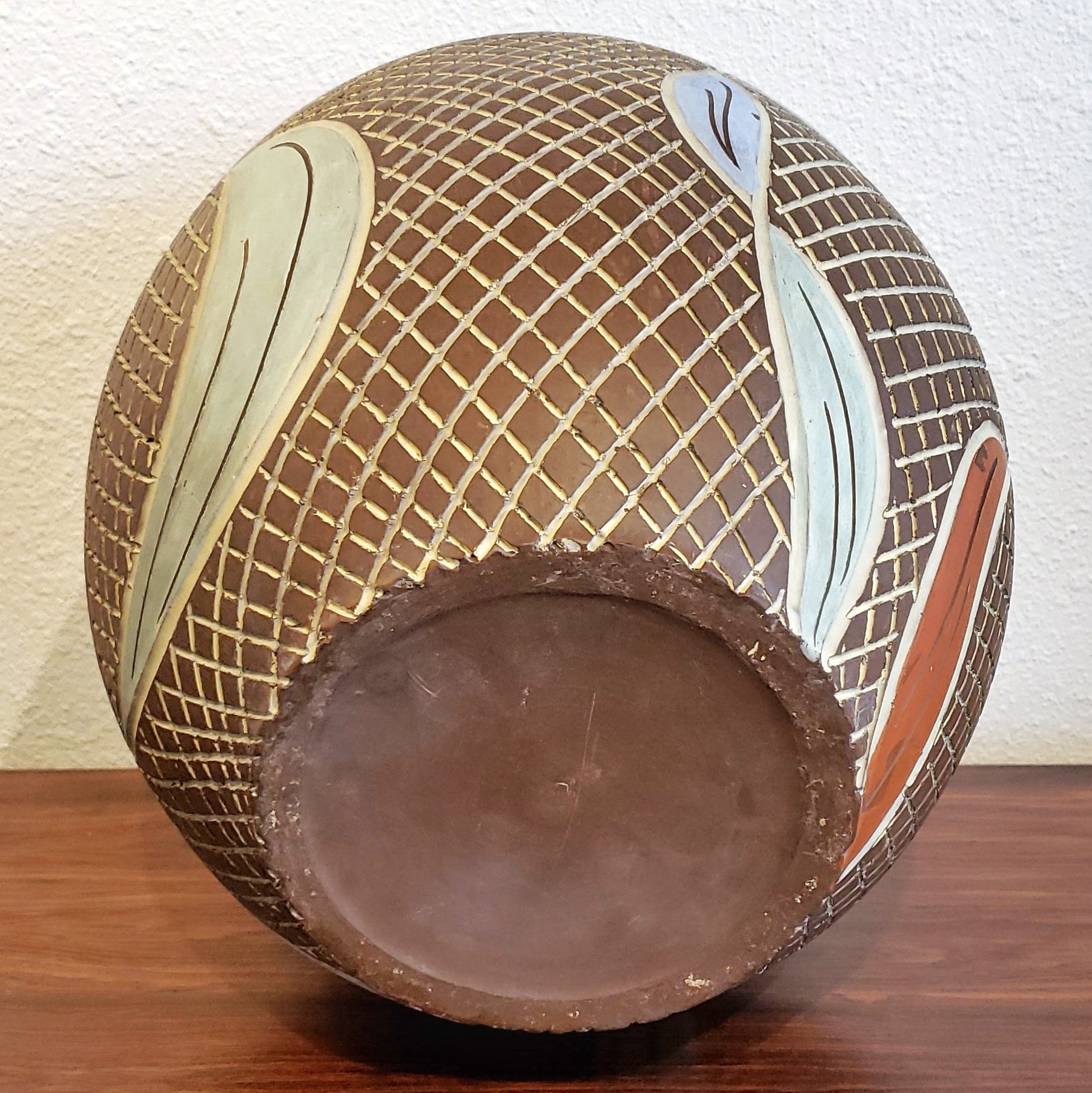
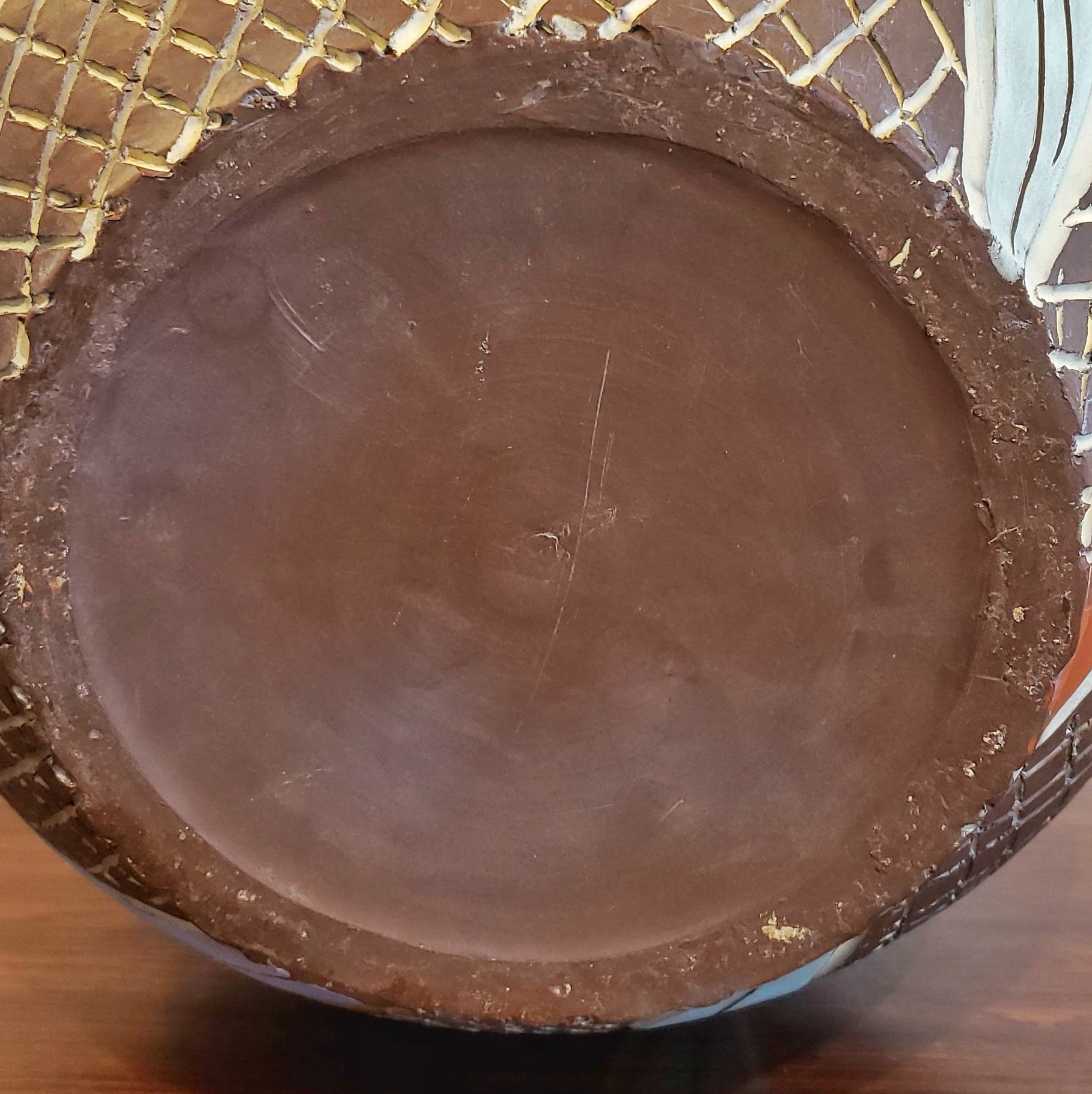
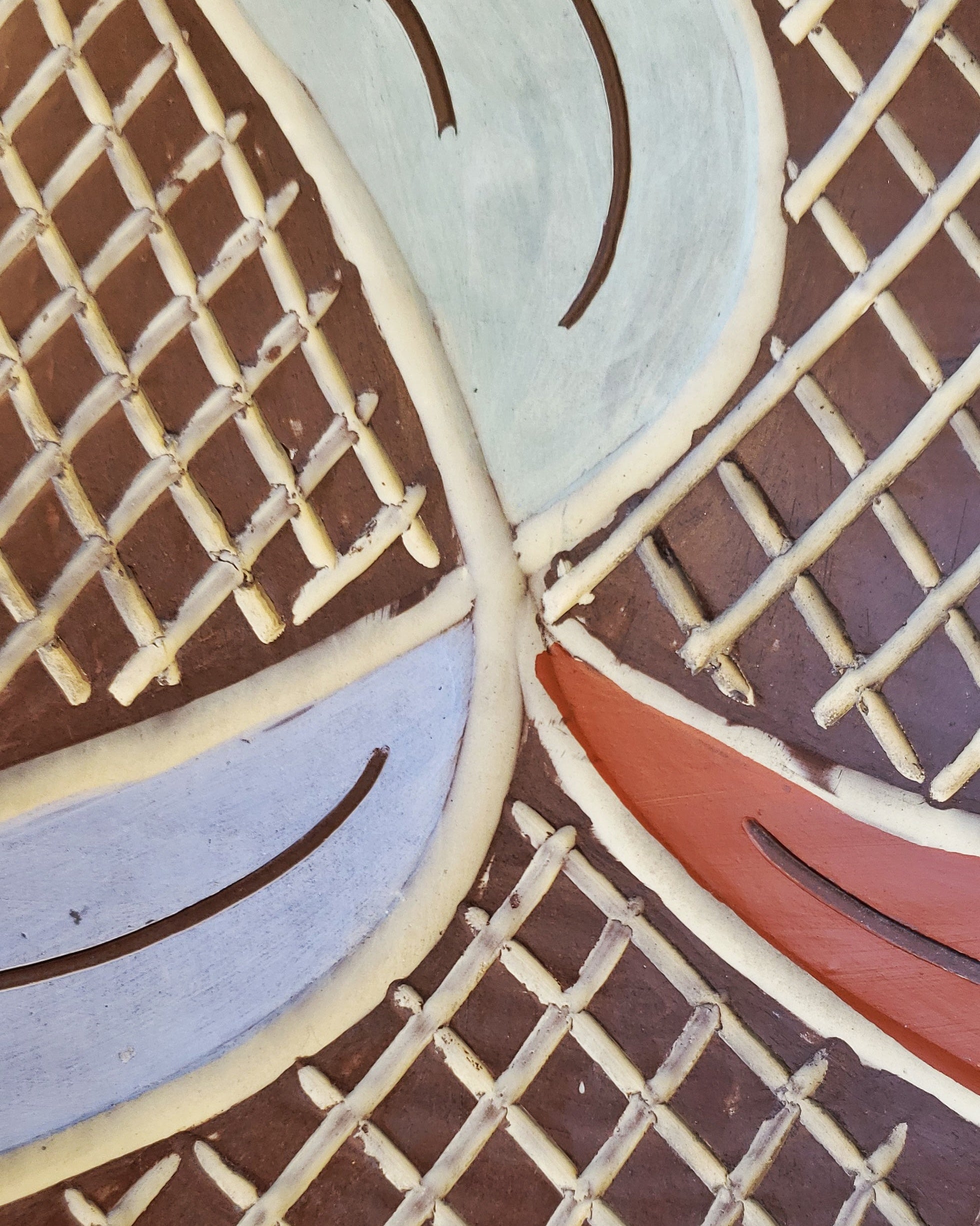
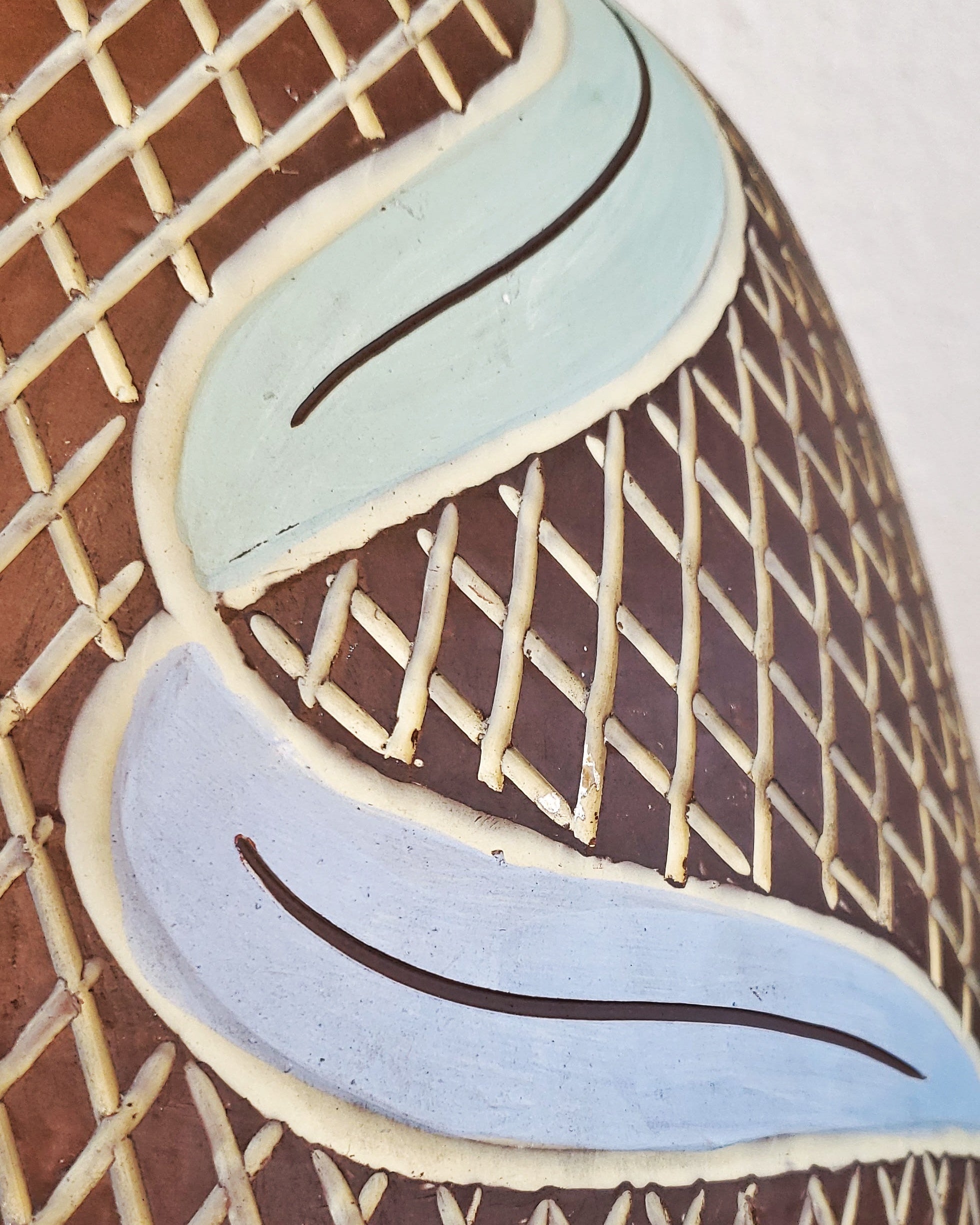
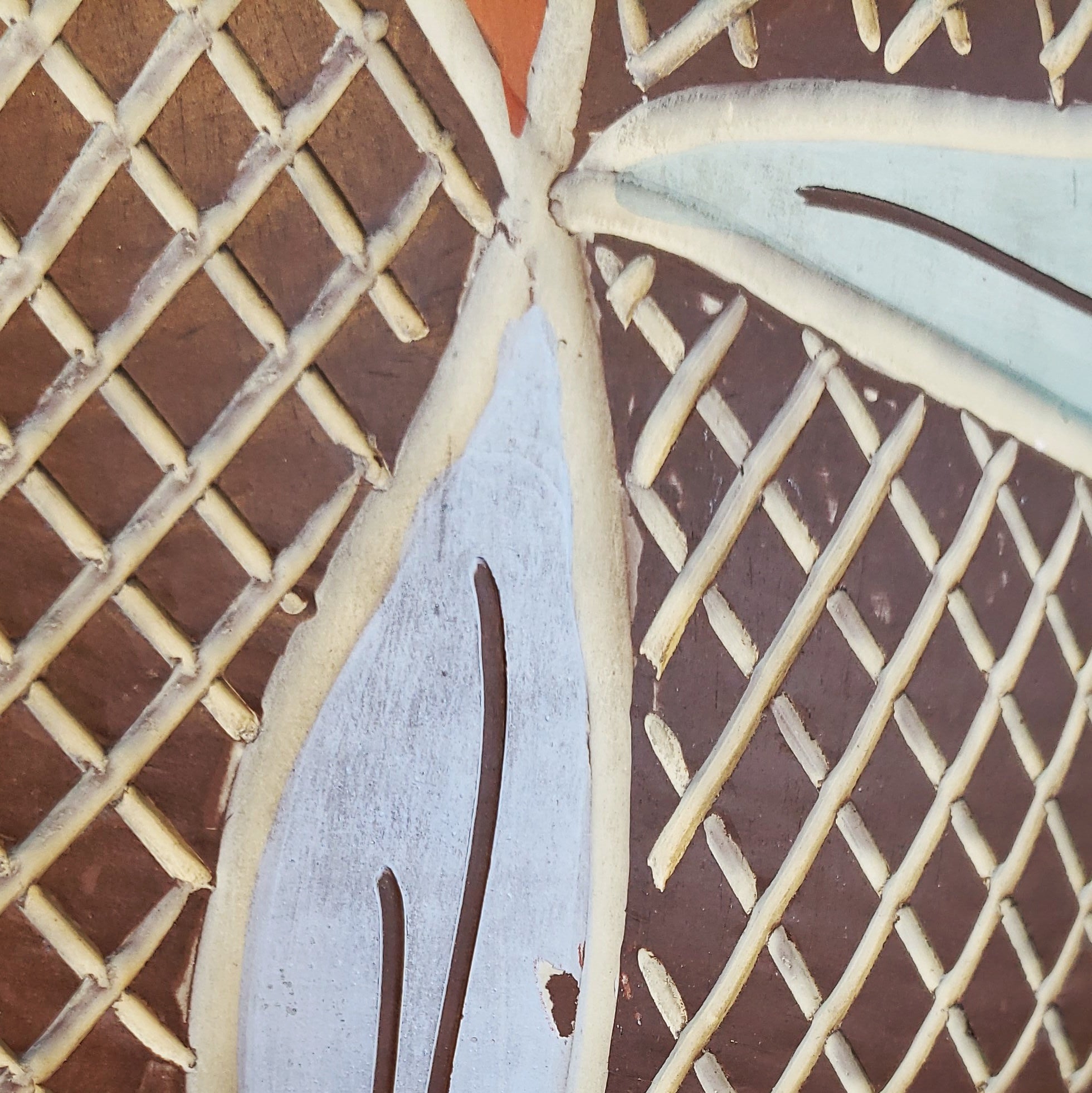
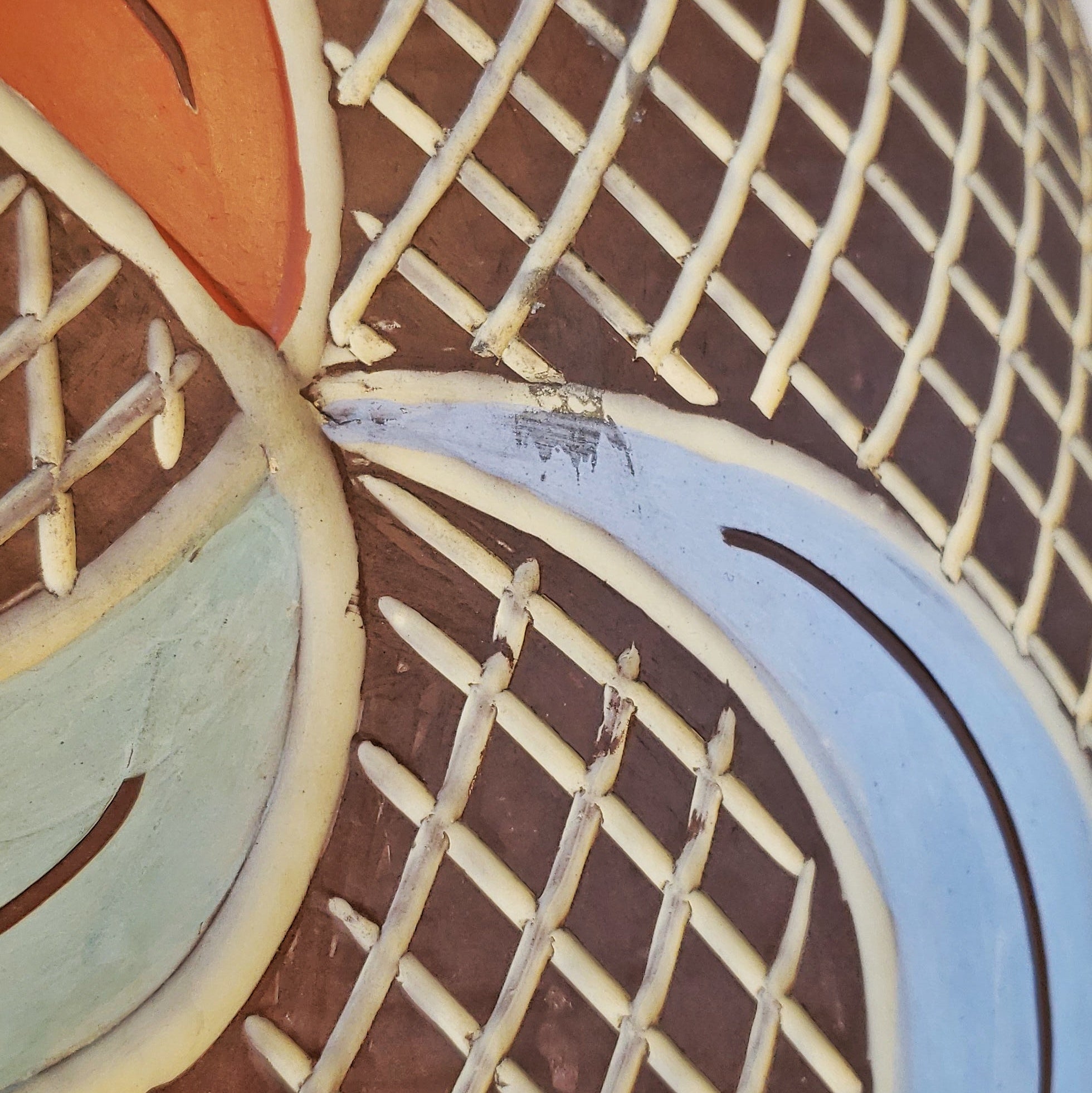
’50s SIERSHAHN KERAMIK SGRAFFITO FLOOR VASE (36cm)
CONTACT US HERE ABOUT THIS ITEM.
A large 50s or 60s studio quality 'Klinker' floor vase nr. 40/35 with an abstract sgraffito ribbon decor designed by Heinrich-Maria Müller for Sawa Keramik. It is completely hand thrown and hand decorated and as such shows all of the tiny imperfections that one might expect from an entirely hand-crafted item. No two were ever alike!
SIERSHAHNER FEINSTEINZEUGFABRIK GmbH was established as a branch of the Übelacker Keramik factory by Johann Übelacker in 1949. As of December of that year when operations started, there were a total of 16 highly skilled employees, mostly from Bunzlau. The count had risen to 160 due to high demand by a year after its foundation. They first produced fireproof stoneware and tableware in the Bunzlau style, but a little later a branch in Mogendorf was added to the Siershahn Factory, in which around 50 employees began producing klinker ceramics starting in 1952. In the same year, their wares were presented for the first time at the industrial fair in Hanover, and included vases and other ceramic containers in four basic décor variants: ‘Natural Klinker’ (made of natural brown clay), ‘Capri’ (glazed a matte gray) ‘Cuba’ (frosted beige and cloudy yellow), and Tirol (frosted green and flocked white).
The entire Übelacker venture remained quite successful through the post-war period up until an overseas investment in the 1980s turned into a financial debacle that left the family struggling with debt. The factory in Siershahn had to be closed as a result. Finally, in 1990, the main plant in Ransbach filed for bankruptcy.
KLINKER POTTERY is made from a native red clay that was otherwise employed in the production of a particular sort of partially-vitrified bricks, commonly referred to as "klinkers"—so-called for the metallic sound they make when struck together. Like the namesake bricks, klinker pottery is hard-fired at very high temperatures. In addition to being hand-thrown, it's usually also burnished and decorated by hand, and only partially glazed if at all. The production methods tend to make these items very water-resistant, and in most cases, waterproof, even without an interior glaze. The Krupps marketed their products under the name "Krupp-Klinker." (Incidentally, being denser than normal bricks, Klinker bricks provide relatively poor insulation. On the other hand, their hard surfaces make them frost-resistant, so they are well-suited for use in facades and as pavers.)
| Manufacturer | SIERSHAHNER FEINSTEINZEUGFABRIK |
|---|---|
| Design Period | 1950 to 1959 |
| Production Period | 1950 to 1959 |
| Country of Manufacture | Germany |
| Identifying Marks | This piece has been attributed based on archival documentation, such as vintage catalogs, designer records, or other literature sources |
| Style | Vintage, Mid-Century, Hand-Crafted, Modernist |
| Detailed Condition | Good — This vintage item remains fully functional, but it shows sign of age through scuffs, dings, faded finishes, minimal upholstery defects, or visible repairs. |
| Restoration and Damage Details | Patina consistent with age and use, Light wear consistent with age and use |
| Product Code | |
| Materials | Ceramic, Earthenware |
| Color | Brown, orange, blue, green, white |
| Width | 11.0 inch |
| Depth | 11.0 inch |
| Height | 14.0 inch |

